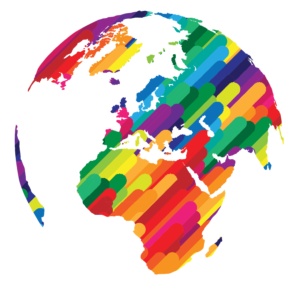The digital revolution in music continues to evolve at a dizzying pace. While traditional online presence remains crucial, as detailed in Online Reputation for Artists: Building Your Digital Legacy, we’re witnessing a seismic shift toward Web3 technologies that promises to reshape how artists connect with their audiences and monetize their work. This new frontier offers unprecedented opportunities for musicians to take control of their digital destiny and forge deeper connections with their fans.
The Web3 Revolution: More Than Just a Buzzword
When techno producer Elena Martinez released her first NFT collection in early 2024, she wasn’t just selling digital art – she was pioneering a new model of artist-fan relationship. Her collection, which included exclusive tracks, virtual studio sessions, and voting rights for her next EP’s direction, sold out in hours. More importantly, it created a dedicated community of fans who became active participants in her creative journey.
The Web3 space isn’t just about selling digital tokens; it’s about reimagining the entire ecosystem of music creation, distribution, and fan engagement. This new paradigm shifts power back to artists and their communities, creating direct channels for support and collaboration that bypass traditional industry gatekeepers.

Understanding the Web3 Toolkit
Think of Web3 as a new instrument in your artistic arsenal – one that requires practice and understanding to master. At its core, Web3 technology revolves around blockchain networks, smart contracts, and decentralized applications (dApps). For artists, these tools open up possibilities that were unimaginable just a few years ago.
Consider the case of electronic music collective Binary Beats, who used smart contracts to automatically distribute royalties among collaborators and even split streaming revenues with their most dedicated fans. Their approach not only streamlined payments but created a new model of fan participation where supporters became stakeholders in their success.
Crafting Meaningful NFT Experiences
The key to successful NFT projects lies not in the technology itself, but in the value and experiences they offer. House music legend Marcus Chen learned this lesson when his first NFT drop – a simple collection of track artwork – failed to gain traction. His second attempt, which included exclusive studio sessions, remix stems, and virtual meetups, became a template for meaningful artist NFTs.
Successful NFT strategies often layer multiple types of value:
- Exclusive music and content
- Behind-the-scenes access
- Community participation rights
- Real-world event access
- Creative collaboration opportunities
The most successful artists in this space understand that NFTs aren’t just digital collectibles – they’re keys that unlock experiences, communities, and creative possibilities.
Building Decentralized Fan Communities
When DJ collective Future Sound launched their own DAO (Decentralized Autonomous Organization), they transformed their fan base into an active community of stakeholders. Members could vote on everything from track selections to tour locations, creating a level of engagement that traditional fan clubs could never achieve.
The power of DAOs lies in their ability to align artist and fan interests through shared governance and ownership. These communities can:
- Fund new projects through collective pooling of resources
- Make decisions about artistic direction
- Organize events and experiences
- Create new revenue streams for both artists and fans
The New Economics of Music in Web3
The financial landscape of Web3 offers artists novel ways to sustain their careers. Progressive house producer Sarah Chen used token-gated content to create tiered access to her work, from exclusive tracks to virtual studio sessions. This model generated more revenue than her traditional streaming income while creating stronger bonds with her core supporters.
Smart contracts have emerged as a powerful tool for managing rights and royalties. Artists can now program automatic payment splits, set resale royalties, and create complex revenue-sharing models that benefit both creators and their communities.
Technical Foundations: Building Your Web3 Presence
Establishing your Web3 presence requires careful consideration of platforms, tools, and security measures. The process can seem daunting, but breaking it down into manageable steps makes it accessible:
Start with selecting the right blockchain network for your needs. While Ethereum remains popular, alternatives like Solana offer lower fees and faster transactions. Choose based on your specific needs and your community’s technical sophistication.
Security cannot be an afterthought in Web3. Artists like Alex Thompson learned this the hard way when poor wallet management led to the loss of significant assets. Proper security measures, including hardware wallets and multi-signature setups, are essential foundations for any Web3 venture.
The Future of Web3 in Music
As we look ahead, the possibilities for Web3 in music continue to expand. Virtual concert experiences are becoming more sophisticated, with artists like Maya Ross creating immersive performances where NFT holders can influence the show in real-time. Cross-platform collaborations are emerging, where artists share creative spaces and resources through blockchain-enabled partnerships.
The next wave of innovation might include:
- AI-enhanced creative tools governed by DAOs
- Cross-platform virtual performances
- Blockchain-verified collaboration networks
- New models of fan-funded projects
Conclusion
Building a Web3 portfolio isn’t just about jumping on the latest trend – it’s about positioning yourself for the future of music. The artists who succeed in this space will be those who understand that Web3 technologies are tools for creating value, building communities, and establishing deeper connections with their audiences.
As you venture into this new territory, remember that the fundamental principles of artistic authenticity and fan engagement remain crucial. Web3 provides new tools and possibilities, but the core goal remains the same: creating meaningful connections through music.
The journey into Web3 might seem daunting, but it’s increasingly becoming an essential part of an artist’s digital strategy. By understanding and embracing these new technologies, you’re not just future-proofing your career – you’re helping to shape the next evolution of the music industry.













